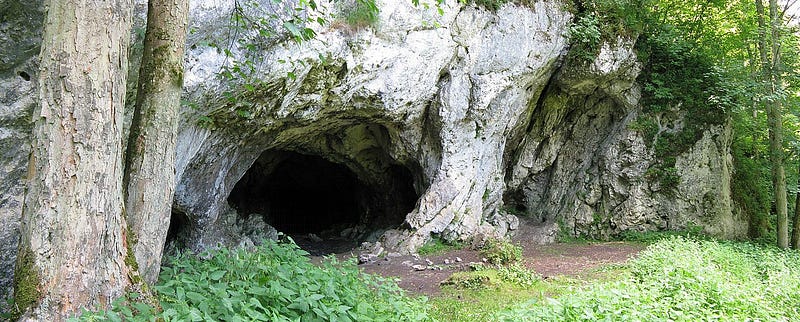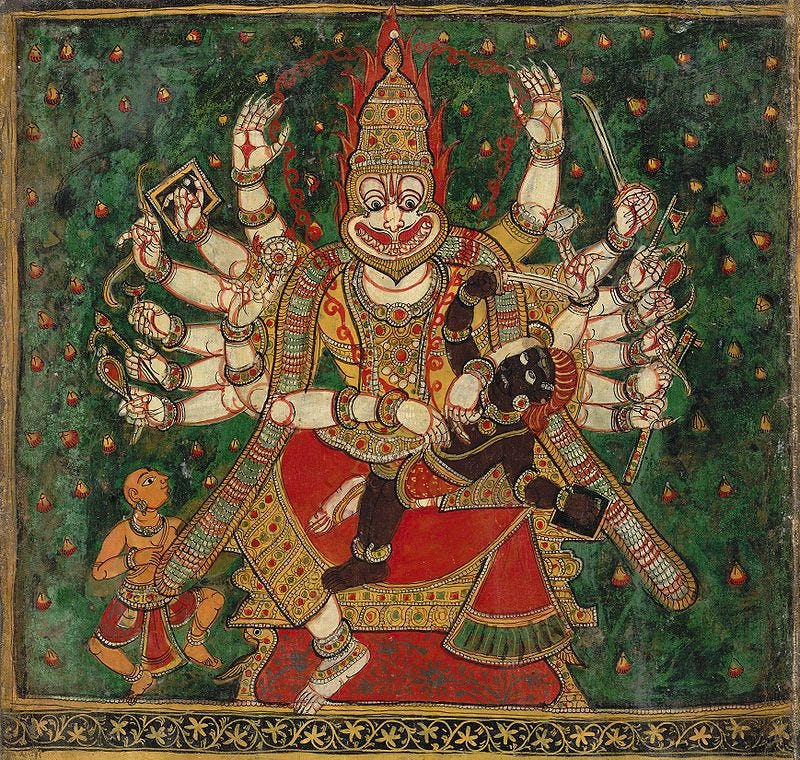# Unraveling the Mysteries of the Human-Lion Figure: Insights into the Sphinx
Written on
Chapter 1: The Human-Lion Figure and Its Significance
The lion-man, an ancient figure symbolizing a hybrid of human and lion, dates back over 35,000 years. This intriguing artifact prompts us to reflect on the meaning behind the Sphinx, a remarkable creation in human history. In both Egyptian and Greek traditions, the Sphinx is depicted as a creature combining human intellect with the power of a lion.
The Great Sphinx of Giza, standing for 4,500 years, is often the first image that comes to mind. However, the ancient world was populated with similar figures. Cultures such as the Greeks, Hittites, Persians, and Indians each produced their own interpretations of human-lion hybrids. What does the Sphinx truly represent? Why was this concept so prevalent in ancient societies? Were these early representations an attempt to explore genetic mixing, or did they hold deeper spiritual meanings?
To unravel these questions, we must travel back in time to the earliest known human-lion figure.
The age of this artifact? At least 35,000 years!
Upon first learning about this extraordinary discovery, one cannot help but wonder: what led ancient civilizations to conceptualize a human-animal hybrid they had never encountered in reality?
Before delving into the potential meanings of this prehistoric lion-man, let’s explore the details of its discovery.
Section 1.1: Discovery of the Lion-Man Figure
In 1937, a team of German archaeologists, led by Robert Wetzel, began excavations at the Hohlenstein-Stadel cave in Swabia, Germany. Two years later, on August 25, 1939, geologist Otto Völzing uncovered a remarkable figurine made of mammoth ivory. Unfortunately, the excavations were halted due to the outbreak of World War II, and the figurine was stored away at the nearby Museum Ulm.
After the war, Wetzel resumed excavations, revealing more mammoth ivory fragments. By 1987, archaeologists had reconstructed the figure, which displayed feline characteristics with a human lower body. The artifact was named Löwenmensch, or the lion-man.
Subsection 1.1.1: Characteristics of the Lion-Man

In 2012, further restoration increased the figure's height from 296 to 311 millimeters. Radiocarbon dating placed it between 35,000 and 40,000 years old. Observing the figure, one can see a human lower body complemented by a lion's face, initially leading experts to believe it depicted a female lion due to the absence of a mane.
However, subsequent radiocarbon dating confirmed the figure’s origins during a time when the Eurasian cave lion, larger than modern lions and also lacking a mane, roamed Europe. In 2013, archaeologists discovered a triangular plate resembling male genitalia attached to the Löwenmensch, sparking debate about its gender.
Section 1.2: What Does the Lion-Man Represent?
The artifacts found alongside the lion-man offer valuable insights into its significance. Archaeologists uncovered bone tools, antlers, pendants, beads, and jewelry crafted from animal bones in the same cave. What message were ancient peoples conveying through this human-lion hybrid?
The discovery of another lion-man statue in 2008 at the Hohle Fels cave, also in Swabia, Germany, alongside bone flutes, suggests that these figures held religious significance, likely connected to a shamanistic belief system. Archaeologist Nicholas Conard posited that the occupants of both caves must have shared cultural practices and beliefs regarding human-animal imagery.
As we examine other similar figures found in France, it becomes evident that shamanistic cults played a vital role in prehistoric European societies.
The ancient peoples had developed skills in crafting clothing, jewelry, hunting tools, and even music, all while communicating through language. Despite their precarious existence, humans demonstrated remarkable adaptability and resilience, while simultaneously being captivated by the forces of nature.
The formidable Eurasian cave lion, capable of lethal force in mere moments, held a mystical allure for early humans. Revered as apex predators, lions became central to many belief systems. In ancient times, lion hunts were celebrated feats of strength, reflecting humanity's desire to conquer an admired predator.
Over time, this profound respect likely evolved into a reverence for lions, transforming them into divine symbols. This legacy endures in various world religions, including Christianity, Hinduism, Buddhism, and Sikhism.

In Greek mythology, the Sphinx symbolizes the destruction of misfortune. In Hinduism, Narasimha, a lion-man avatar of Lord Vishnu, embodies divine strength. Narasimha destroys the demon Hiranyakashipu, fulfilling a boon that rendered the demon invincible. This myth illustrates humanity's fascination with human-lion hybrids as protectors and symbols of power.
The prehistoric lion-man from Germany offers crucial insights into the development of early religious beliefs and the human psyche. This ancient artifact serves as a key to understanding our lasting reverence for lions and their pivotal role in various religions.
Chapter 2: Religion and Early Human Societies
The first video, "New Evidence For The Great Sphinx Lion Claims? | Ancient Architects," explores recent findings that may shed light on the Sphinx's origins and its connections to ancient lion-human symbolism.
In the second video, "The 40,000-Year-Old Lion Man of Ice Age Europe | Ancient Architects," the focus is on the significance of the lion-man figure and its implications for our understanding of prehistoric beliefs.
As we reflect on the evolution of religion, we find that in hunter-gatherer societies, spiritual practices often preceded the need for agricultural stability. This transition from shamanism to organized religious structures highlights the enduring quest for meaning that defines humanity.
Curious to learn more about why ancient civilizations prioritized spirituality over survival? Keep reading.
An Ancient Temple Suggests Religion Predated Farming by Several Centuries
Why did ancient humans prioritize organized religion over food security?